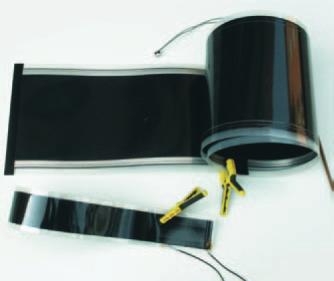Basic HTML Version


BCD Special Report on
Historic Churches
18th annual edition
15
For example, installing radiant floor heating
means removing the whole floor and the loss
of its historic fabric. Further serious problems
arise if tombstones or archaeological remains
are present. Warm air heating involves the
excavation of large ducts to blow and extract air.
Internal gas combustion heating requires piping
for gas supply and the insertion of ventilation
holes. Hot water radiators are fed by large
insulated pipes installed inside the masonry.
Repeatedly changing heating systems is
not sustainable, especially for old buildings:
invasive work cannot be repeated every
few decades. Therefore, the choice of
heating system needs to prioritise minimal
intervention and reversibility, ensuring that
obsolete systems can be easily removed and
the building returned to its prior condition.
The two main types of heating, central
heating and local heating, are discussed in
more detail in the following sections.
Central heating
Central heating is designed to provide even
heat distribution within the whole building, at
the same time supplying heat to the building
envelope (Figure 1a). It is used to reach the
desired comfort level, or to provide background
heating to the building in order to prevent
very low temperatures and frost. The most
common use is for large building volumes, and
the most popular systems are radiators, warm-
air heating, natural or forced-air convectors,
electric or fuel stoves and underfloor heating.
In terms of conserving historic artefacts
we should note that each heating operation
forces the indoor climate to depart markedly
from the historical climate, causing a potentially
harmful situation. Critical factors are: sharp
peaks in air temperature and sudden drops in
RH, which is a common problem with warm
air heating installations for occasional use;
or cyclical changes in both air temperature
and RH where systems are used to provide
gentle background heating or where large
inertia systems (such as underfloor heating)
are used; or excessively low RH where
continuous heating is required in cold regions.
Unfortunately, very low RH cannot
be mitigated by the addition of moisture
vaporised into the air. To understand the
problem it is necessary to consider separately
the thermodynamics of intermittent and
continuous operations. (Technically, this
should be explained in terms of ‘dew point’, the
temperature at which moisture precipitates
from humid air, but it can be more easily
understood by considering surface conditions
alone, in terms of RH reached at the interface
between the air and the object surface.)
In the case of intermittent heating, when
the system is operating, paintings on canvas,
tapestry and the surface of wooden artefacts
will closely follow the sharp increase in air
temperature and the RH at the interface will be
exceedingly low, causing some surface drying.
In contrast, frescoes, marble statues, masonry
and other items with a large inertia will remain
cold: initially, the surface RH will remain
normal, but as the air temperature in the upper
parts of the interior rises, moisture evaporating
from the ceiling and the upper masonry can
be carried by convection currents to cooler
surfaces below. Here it is supplemented by
moisture released from people, causing the RH
at the interface to become very high (Camuffo
et al 2010). As a result, any addition of moisture
into the air will be beneficial to objects with a
short-term inertia, but it will have a negative
impact on objects with a long-term inertia.
In the case of continuous heating, all
surfaces will reach equilibrium with steady
but different temperature levels determined
by internal heat distribution, leakage and heat
loss via conductivity, for example. Once again,
the addition of moisture into the dry air will
be beneficial to the warmest surfaces but will
have a negative impact on the coldest ones,
where condensation may occur, potentially
generating moulds or affecting masonry
by triggering salt crystallisation cycles.
Central heating requires a huge amount
of energy, a large proportion of which is
wasted through thermal bridges, leakage and
storage in the building envelope. Typically
historic churches are not energy-efficient
buildings and their scope for improvement
is limited. Being based on the dispersion
of heat, central heating is not very effective
in this type of building, where there are so
many potential sources of heat loss. With
central heating, people benefit from only a
small proportion of the total power supply,
meaning the whole system has low efficiency.
Local heating
Local heating is designed to produce the best
radiant temperature only in the occupied
parts of the building, with some local
increase in air temperature and a minimum
of draughts (Figure 1b). The rest of the church
volume remains almost unaffected and
Figure 1
The two heating strategies: (a) central heating aims to provide even heat distribution throughout the
building while also supplying heat to the building envelope. Most of the heat is accumulated in the upper part
of the building (b) local heating aims to produce the best radiant temperature within the occupied area of
the church only, with some local increase in air temperature and minimum draughts. The rest of the building
remains almost unaffected and preserves or remains close to its historical climate.
a
b
Figure 2
Heating foils: the wider strip was used for underneath the pews, the narrower one was used for the
kneeling pad and pew-back hand-heaters.

